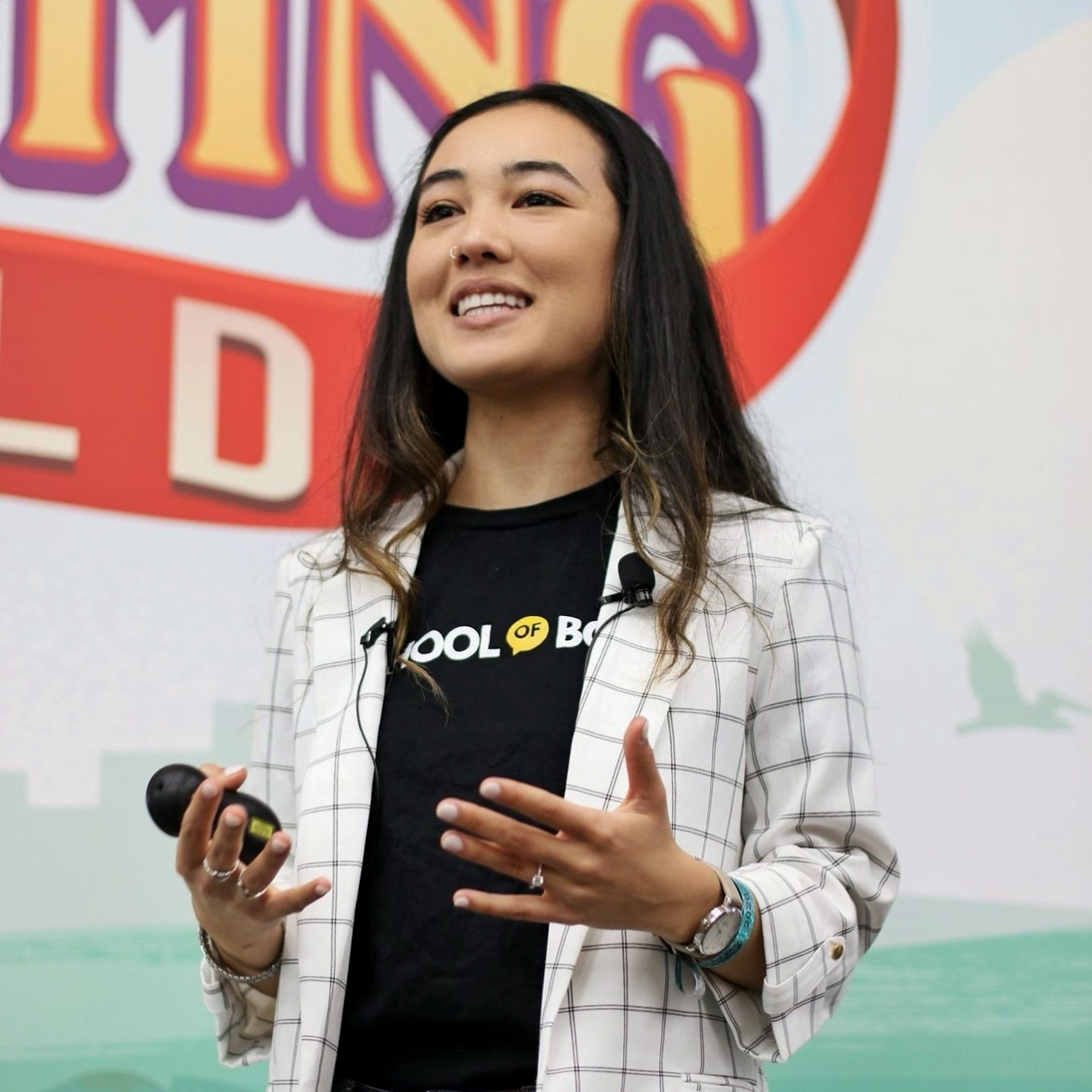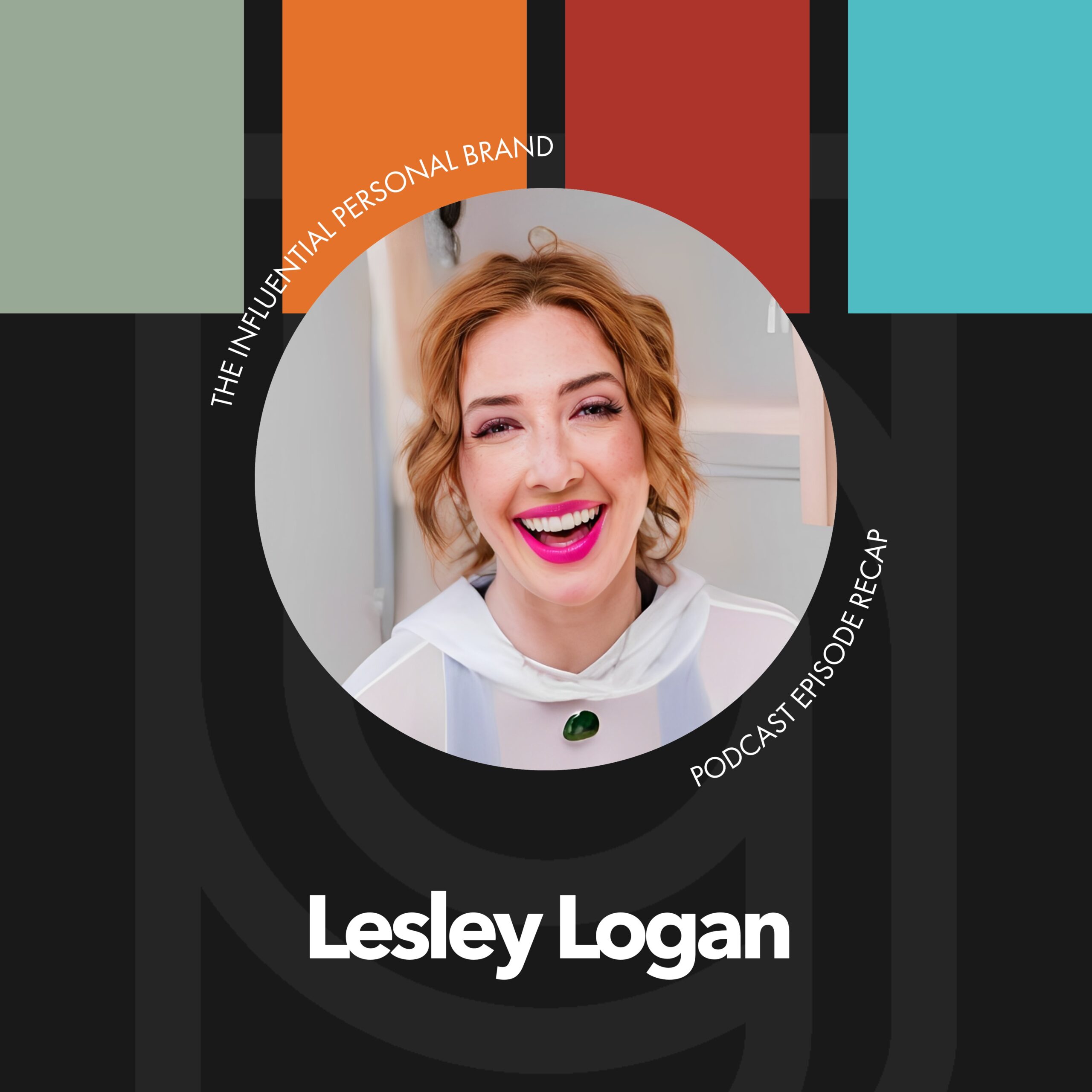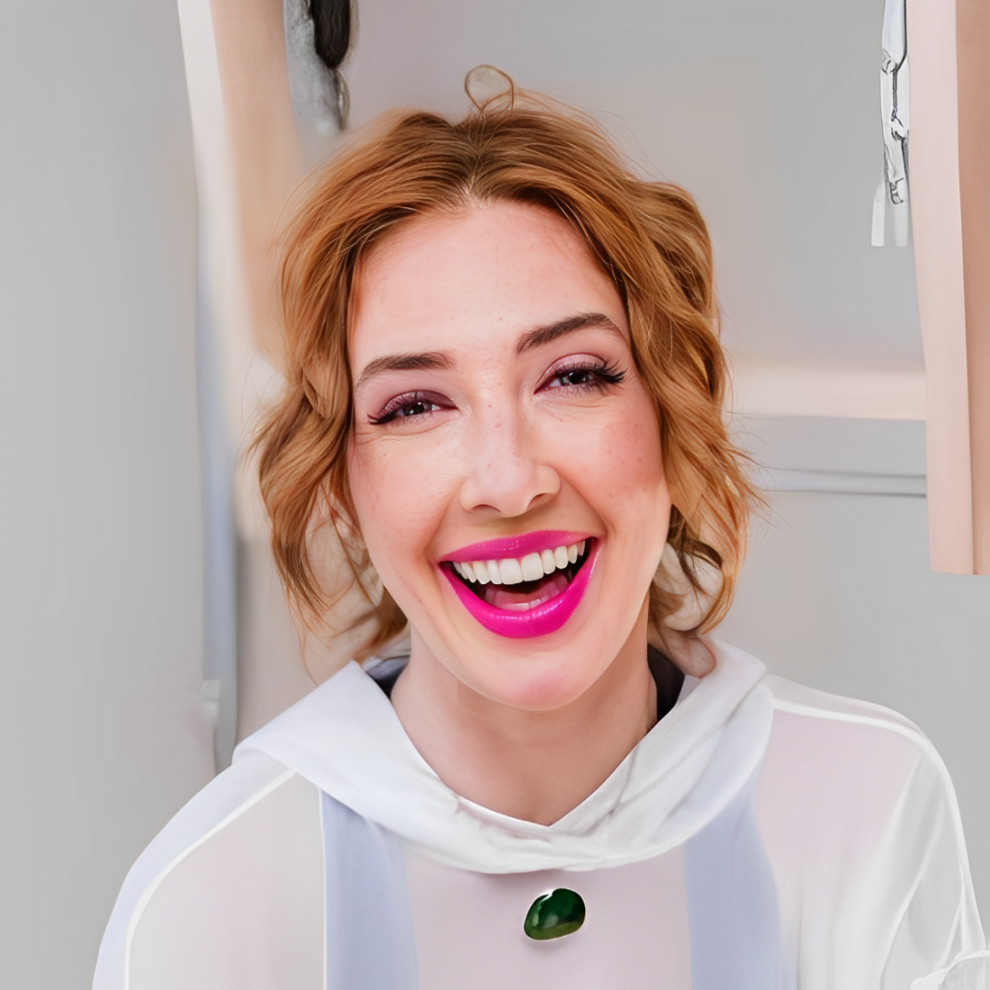Hey brand builder, Rory Vaden here. Thank you so much for tuning in to listen to this interview. We are so excited to bring you this information and wanted to let you know that, Hey, there’s no sales pitch coming from anything that we do with this is all our value add to you and the community. However, if you are somebody who is looking for specific strategies on how to build and monetize your personal brand, we would love to talk to you and we offer a free call to everyone that’s interested in getting to know us and is willing to give us a chance to get to know them and share a little bit about what we do. So if you’re interested in taking us up on a free strategy call, you can do that at brand builders, group.com/summit. Call brand builders, group.com/summit. Call talk to you soon on with the show.
This is get ready for an amazing episode. This is like a mind blowing episode. This is one of these things that you’re going to go, Whoa, I can’t believe this exists and where the world is going and that this is a part of the future. I’m given a little special introduction here to my new friend, Natasha Takahashi. Because honestly the first four minutes of the interview we did together cut out for some reason. And so you don’t get the normal, like live real-time introduction that I usually do with my guests. So I have to recreate it here, but it was, it was mostly just like you know, the pleasantries a little bit. And then, you know, we captured the conversation, but I want to say this. So Natasha is somebody that I brought on who is a new friend who which again, you know, I don’t do that very often.
It’s usually something that really catches my attention. And she is actually somebody who caught my attention specifically because of her expertise. In fact, I would say she’s a great example of somebody who has defined such a specific niche for herself and her partner and their company, that they are starting to dominate and own a space. And they have quickly become one of the world’s leading authorities, if not the world’s leading authority on this very narrow, specific pointed expertise, which is chatbots also known as conversational marketing, which is an emerging technology and emerging strategy, emerging tool that I, I think that we think can be huge for personal brands. Now I also want to let you know that typically we don’t interview a lot of people on things that we’re not doing yet ourselves, but this is something that we’re exploring. We’ve known about it for a couple of years.
We’ve had our eye on it, had we not exited our former business a couple of years ago, we would have implemented it a couple of years ago. So we started a brand builders group we’re having to rebuild and retool and reload if you will, and get our feet underneath us. And so we haven’t yet started using chatbots, but we do do some manual versions of this, which I’ll talk about in the interview. So I just wanted to give you that context and background both on Natasha as a personal brand and just how it fits in and, and go. And yeah, she’s a great example of somebody that we’re giving our platform to, because she’s done a great job of carving out, you know, this uniqueness. And she really is an expert. So who is she? So technically she’s the chief marketing officer and the co-founder of ineffable marketing marketing which is an agency that does chat bot marketing, and they have built these chat bot marketing campaigns for over a hundred different companies and brands.
Several of them you’ll recognize ClickFunnels, mind Valley, digital marketer social media examiner. Those are really good friends of ours over there. Michael Stelzner Matthew Hussey. Billy Jean is marketing, you know, in a, in a, in a bunch of other ones, but Michael Stelzner specifically is someone that we know really well that we trust. He really knows his stuff and he doesn’t introduce or use vendors lightly. Which is one of the reasons it was, it was such a compliment for him to recommend us to his audience. And, you know, I’ve spoken in front of at, at social media marketing world several times. And Natasha has spoken at social media marketing world as well. So she, you know, is highly reputable and this, this company we haven’t yet engaged them personally, but I suspect that there will come a point here in the not too distant future that we will engage with them.
But I want to just to give you that context of how I met Natasha and what we’re talking about, chat bots, this is the automated, you know, when you go to a specifically Facebook messenger is where we started to notice this, right, is like you send an email, people may or may not open it. You said a texts. You know, you may annoy people if you do it too much, but chat bots, which happened through direct messages and it started primarily on Facebook messenger are extremely responsive. They have incredible engagement and open rates. It is, it is a great way to get your message to more people. But it’s a little delicate, right? Cause we’re automating it. And so we talk about a lot of that and I would very much classify this as an advanced technique and advanced technology and advanced tool.
This is not the thing that’s going to make or break your brand early on. You’ve got to build substance, but once you’ve got that, whew, this is a way to throw some fuel on the fire. And anyways, I think, you know, some of this may blow your mind. It definitely did, for me, it was, it was a lot of new information. So without further ado, that is my introduction. And now you will pick up exactly four minutes into my conversation that I had with the wonderful and delightful and extremely intelligent Natasha Takahashi. All right. So, so for those people that don’t know, like just to take it super high level, what is a chat bot? And you like, you, you mentioned Facebook, but then you said other places as well. So like, how should we, how should we think about chat bot in general? Like where are the places that this shows up and, you know, this is basically if I were going to summarize it, this is automating, this is creating automated, like marketing automation for DMs, more or less. Right,
Exactly. Right. And the way that we define chat bots is one-to-one conversations at scale, which has never been possible in history because even though conversations have always been a part of business, you know, somebody walks into a store, they want to know a little bit more, and then they buy something from you or they come back later on. Now we’re doing that at scale online. But the conversation part of it’s still hadn’t been scaled up until chat bots on Facebook messenger actually became available. So 2016 was when chat bot uses for marketing and sales really became a thing before that there were chat bots in other use cases, you know, there’s different apps that allow you to talk to them. You know, it’s a little bit more of an automated system that’s been going on since the 19 hundreds, essentially. But now with Facebook messenger, having led the way for Chapa automation from a business to user standpoint that is directly for discovery, for sales, for customer support, for retention of members, et cetera. All those use cases really started to blow up in 2016. And so when we talk about other channels right now,
This is totally new. I mean, this is, this is, this is like brand new stuff going on, which is why I wanted to talk to you. Cause I was like, Whoa, I think to what you just said, the reason I think this is so powerful, is it as one-to-one conversations, which most of you know, this is how I started. I started out going door to door when I was in college knocking on doors. And it was, it sucked, it was so painful and hard, but there was nothing faster than having a, having a one-on-one conversation with someone where I could take them from never heard of me to here is some money than a one-on-one conversation in a, in a 20, 20 minute window. And what you just said, Natasha, about one-on-one conversations at scale that are automated. I mean, I, I, I think this is a huge part of the future.
Absolutely. and to go back to your second question about the different channels, Facebook messenger, hands down is the best place, the most affordable, the most accessible place channel, if you will, to start out with regardless of business type or industry. And the reason is because all you need is a Facebook page, which ideally you are already utilizing for your business, right? You’re posting ideally a few times a week, engaging with people they’re using all the other wonderful features on Facebook, as well as running ads. And so when you attach a Facebook messenger bot to that page, then not only can people come to your page and just message you, but you can also leverage it for Facebook ads and use it in so many different types of campaigns and use cases. And apart from that in the Facebook ecosystem, right, in terms of messaging apps, we have Facebook messenger, Instagram and WhatsApp. So just to bring us back for a moment, Facebook in 2019, announced that they wanted to create a way for all three platforms to talk to each other, they called it interoperability. So we’re going to just get technical for a moment and their goal with it.
Yeah. That sounds, it sounds like an expensive word. That sounds smart. Yeah,
It does. It does. And so their whole goal was, you know, with different demographics in an audiences preferring different channels. You may have, let’s say a mom who loves talking to friends, business, et cetera on Facebook messenger, but then maybe her, you know, 20 year old daughter loves only using Instagram, DM, maybe WhatsApp a little bit. And so they could talk to each other on their platforms that they love. So let’s say the daughter’s on Instagram messaging or DM. And the moms let’s say on Facebook messenger, she can message the Instagram profile of her daughter while staying on Facebook messenger. Daughter’s going to be on Instagram, DM, right. Messaging mom on messenger. But they’re going to have their own experiences in the platforms that they know and love.
And grandma’s on WhatsApp talking to her home girls over, over in Singapore about some, some investment deals and they can all be so they can all be chatting in their native, in their native platform. That’s cool. I’d never even realized that.
Exactly. And so Facebook has already rolled that out. Maybe some of you have seen that and you’ll see more and more of it, where on messenger, you might’ve gotten a notification or an Instagram that says, Hey, now you can talk to your Facebook friends here in this inbox. So they’ve already started the process, but the reason why, you know, any of you guys should give a crap about this is because that means that businesses who are currently set up on Facebook messenger will be able to leverage more and more of that automation on those other platforms. We’re already testing Instagram, DM bots and WhatsApp bots in private beta with Facebook. And that’s going to be rolled out to more and more businesses this year. So that long story short, you know, going back to my concept about choosing different channels, Facebook messenger is the Guinea pig. Like you should be on there yesterday because you can be testing out conversational psychology for your audience. Like what do people actually want to talk to you about? What are the use cases that will bring the most ROI to your business and all of that translate to any other channel in the future, SMS, Instagram, WhatsApp, et cetera.
Yeah. I mean, conversational psychology, like there’s the term right there of which, you know, those of us from the old school. Cause you know, I’m almost 40, which makes me like an old gray haired person in this industry now is, you know, this was human to human sales. It was actual like one-on-one like quote unquote, like hand to hand combat of persuasion. And now this is happening. And so before we talk about all the things that can do, I need to help you, I need you to help me get past a psychological block that I have, which is number one, it’s this idea of feeling like I’m pretending that people are talking to me, but they’re not actually talking to me. And so that’s number one. And then I guess just kind of like I mean the worry there, there’s like a couple of worries.
One is like, okay, I don’t want to mislead people to somehow make them think that they’re actually talking to me when they’re not, even though if I write it, it’s kind of like, I am, it’s the same thing. Like my assistant, my assistant has a set of responses right now that she’ll copy and paste as me. Cause it’s like, I literally that’s what I would type if I were there and then the other, but the other, the other part of it is is, is making sure that it doesn’t ever do something that I wouldn’t do that like, Oh gosh, I would never say that. So how do you, how do you, how do I get past that emotional, like roadblock before we get into the technical part?
Sure. And those are great questions that I think, especially for personal brands, really important to consider and think about links for the number, the first thing that you mentioned right around, ultimately you’re asking, you know, what should the persona of the Bot be, like, how should we position this? So that people think of this as a helpful automation, almost like a personal concierge to help them with whatever they need, rather than positioning it as this is Rory, you know, and I’m here right now, talking to you. It’s actually illegal in some us States to have a chat bot pretend that it is a human. So there are laws in place in the world that essentially prevent you from doing this anyways. And you know, it’s not super ethical to say I’m actually here when you’re not. So the way that we typically position this for personal brands is that we’ll say something like we’ll either give the bot its own persona and say, Hey, I’m, you know, Jennifer. Yeah, exactly. You know, I’m Jennifer, I’m, Rory’s personal concierge. I’m here to help you with whatever you need from brand builders group. Like let’s get into it. You know, which of these things are you looking for? Just as like an example, or you could say, Hey, this is Rory’s bot, I’m not here right now, but I did create all of this for you. And I’m excited for you to go through this experience so that I can serve you 24 seven, you know, insert other benefits that make sense to your audience. So those are the,
I think that’s really cool because I would, I, you know, like that’s how I think of even how I think of a funnel is like, I’m not here with you live, but it’s like, this is my brain. Like if we were having a conversation, I would be telling you the same thing you’re seeing on this video, which is not that different from a podcast or anything else. I guess
That’s actually a great analogy that I haven’t really mentioned in the past, but I mean, a hundred percent, you know, if you’re viewing anything prerecorded or pre-written online, that person’s not there in your life to you. So yeah. That’s a great perspective to bring.
I like, I like Rory’s bot plus I could give him like some awesome alter ego and he could be like way more confident than I am and like really smooth talking and like really handsome, exactly a smooth, smooth talker, but so, okay. All right. And then, so this is, this is Rory’s bot and then how do I go about doing this? Because when I think about a conversation, my mind goes to what makes a conversation a conversation is there’s like an infinite number of possibilities. The conversation could go. And how do I get my mind wrapped around the idea that we could actually structure a conversation somehow that would feel like a conversation, but still be scripted enough that you could automate it without me writing like a hundred thousand, like, do you use like a decision tree to do this? Or like, how do you actually map this out?
Yeah. So a lot of people will come at it from that perspective, which is why they get overwhelmed of like, there’s so many things that we could do with this. You know, me, if I’m a personal [inaudible] and I’m sure a lot of people listening to this feel that way as well, if they’ve tried to tackle this. And so what it comes down to is simplifying it down to one specific use case. Let’s start there that you want to start with. So if we go back to my original example of somebody wanting to, let’s say, come into your business, learn more and see if they can book a call with you or, you know, buy something low ticket to, to better understand know that your chat bot shouldn’t be able to do everything a human could do. It should be able to handle specific use cases.
And those expectations should be set at the beginning of the conversation. So let’s say that you are setting up a chat bot with one use case, let’s say one campaign that is going to help leads book calls. You’re going to qualify them. Let’s say for your coaching program and you are then going to allow them to book a call, or if you find that they’re not qualified, then maybe you send them to a lower ticket offer or something free. That’s one campaign, one conversation that you technically already have scripts for, right? If you got on the phone today and someone’s like, Hey, I am XYZ business owner trying to do whatever my goal is. Then you know, what should I do with you guys? And then you would have probably specific questions that you are already thinking of right now that you would want to ask them, what’s your revenue?
How much are you spending on ads, marketing, et cetera, how many people are on your team, whatever it might be. Those qualifying questions that you might even actually already have written out on, like, let’s say a discovery call form or something of the, like an application. And you put all of that into the conversation, keeping in mind to always give the person opportunity to speak. So it should very much so always be a back and forth, right? Of like you asking the question that, you know, you need to know the answer of the person sharing that and then saying, great, thanks for sharing that, going back and forth, back and forth. And then at the end, the expectation you set at the beginning of, Hey, I’m going to let you know what I think the best next step is for us in this relationship. Then you shared that at the end.
And technically you already have this all mapped out inside of your head. You just need to get it out into a conversation and going back to expectations, just one last thing to say here, because you know, you bringing up the concept of, well, there’s so many different things I could pull up and things like it say again, it all comes down to the fact that if somebody were to message you and say, Hey, tell me a joke, or like, I need help with this super random thing. You’re like, I’m not gonna help you with that. That’s not what we’re here for. And so in the same way, your bot should just be able to handle things like that, which is very easy to implement at like a minimum viable level. So you can just say, Hey, you know, I can’t help with that at the moment, but here’s what I can do. I can help you understand what the next step would be if we were to work together. Does that all make sense?
Yeah. Yeah. So I just, how many of those things do you, you know, like if I’m going to write out a script to go, you know, what’s your goal with your personal brand? What are you struggling with? Are you hoping to write a book one day? Did you know that we can help you with that? Like that’s a pretty straight path to a free call, but planning for the other stuff of like, Oh, they asked me for a joke. Well, you know, tell me a joke or they asked me, I guess, do you just kinda like have a set of templates? You walk people through that says, you know, you need to write something for this and you need to write something for that. And I mean, is that, is that a cell? And are there a thousand or are there like five?
So when you first start out, there will be more like five, because what you should build into your bot initially is what we call the fallback. And that’s pretty common language and conversation design, which is that if you don’t have specific triggers set up, like let’s say someone says a personal brand inside of your body, then you might want, that’s a little bit vague. Still. Let’s say something more specific. I want to work with you. Then if somebody says something like that, you can set up a trigger so that when someone messages you that then you would send a specific response. But if they sent hey, tell me a joke, plus a thousand plus other random things someone could send you, they’ll all get directed to this fallback that says all, you know, you can test a few varieties of that. Like, Hey, you know, I’m learning every day.
So I’m not smart enough to answer that right now, but here’s what I can help you with. Or like, Hey, you know what, we, we actually don’t help with that, but here’s what I can help you with. And just always letting people be able to reply to that and say, okay, then just kidding. You know, maybe I was looking for something else or no, thanks. Or they might need to talk to a human or go to your help center. So there’s always different paths to kind of take people through and just close the loop. But you should not feel any pressure to have, to have all of those different triggers available for the most random things. Like you’ll get that data in over the first few months of the chat bot running and you’ll know what you actually need to implement in terms of those triggers.
So how much of this is kind of like a mapped out decision tree. If they say this, you say this, or you ask them a question and it’s like, this answer goes here. This answer goes here. How much of it is that versus like artificial intelligence where you’re just basically like putting in, I don’t even know how that, is it artificial intelligence or is this more like a decision tree that you’re mapping out?
Those are two different levels of, let’s say chat bot, marketing slash conversation design. And so the AI level is something that we, from a marketing perspective, we add that on as a layer on top of the decision tree. So the decision tree would be a sales and marketing conversation, even customer support style conversation that we create inside of a specific chat bot platform for a channel like Facebook messenger. And then as we start to see the data coming in for what people are saying, as well as just like random conversations that aren’t related to this, because people can message your Facebook page, anytime about anything they want. So getting all that data, and then we can start to stack the AI on top of that. So it can make sure people are going to what they need to essentially, and it can answer more questions that maybe didn’t start in a specific use case that are, you know, just incoming questions or messages that don’t have to do with a specific campaign.
You start, you start effectively, you start with a decision tree, like you’re saying, pick one objective. Like I want to get more people into this funnel or more people to request a call or more people to click on this link or whatever. And you just kind of like write a conversation for that. And then after you’ve got data coming in, then you can layer AI on later. Exactly. Right. And, and, and in terms of the technology that you’re using to do this, cause I see this as like, you know, there’s a little bit of an emotional part here, which we talked about, and then there’s like a strategy part, which is the decision tree and the conversational. And then there’s the technology part. So is this, this is like drift, right? Like this is, these are our, what are the, is that, is that the tool like, cause there’s a tool that you have to actually use to integrate with Facebook to, to build all this out. Right. And there’s different ones. Does it, is there pretty much like only one that you’re using or they’re like three or like what are the, what are the industry best standards here? Like, does it, are there a hundred already or how many are there we really looking at?
Yeah, there are quite a few platforms available, but just like, there are a gazillion platforms available for email marketing and you’re looking at like five to 10 top industry, totally eating platforms, same thing here, there are a gazillion platforms you could choose from, but the tech stack for chatbots just looks a little bit different than email marketing, although similar aspects, like there’s some crossover for short. So for example, we will start with a no code Shopbop platform because we come at this from the marketing perspective. And at this point it doesn’t make sense to code your own entire bot. It takes a lot of maintenance. It’s kind of like managing a WordPress site, but like 10 X, you know, you’re having to update things all the time, et cetera. Whereas if you use a out of the box solution, so what we primarily use is called many chat and that platform allows us to build everything we need to, they manage all the development code side of things, but we can still customize on top of that and add custom code and things that we want to. So that’s one example of a platform that you could go to similar, like using, you know, infusion soft drip, et cetera, for email marketing, but you would have this dedicated platform for your chat bot channels. So that’s,
So I basically, if I set up a Manny chat account, M a N Y chat is how this is, I set up Manny chat, you know, I integrate it with my Facebook and then it pulls me into some interface where I’m going, if this, then that, if this, then that, if this, then that, and you basically just write it out.
Yes. So you can create the entire backend automation as well as the content that users would see all inside of there. It’s kind of like a CRM plus, you know, content slash campaign management platform.
Huh. And then are you able to S to basically like, look at all those conversations or export them after to like analyze and go, okay, here’s what happened here? This person, you know, all these people are asking this and we’re sending them to the wrong thing. I mean, does that
Definitely, there are a few different perspectives on this though, and also more advanced techniques. So when you’re first starting out, like you can be reading through all the conversations happening just to be searching for certain areas where maybe the bot dropped the ball, you want to adjust copy, or like, Oh, that actually was confusing. Right? So that’s kind of level one of just taking a look at everything. Now level two would be to actually attach an analytics platform. So that be another step in the tech stack. There are tools out there, for example, dashpot, that’s a D a S H bot, and there’s also a platform literally called bot analytics. And both of those allow you to plug in whatever channel it is, Facebook messenger or otherwise. And it’ll analyze all the messages coming in. So it’ll tell you literally everything that you would want to know, right. What’s the most common word someone is saying to the bot, how many messages are coming in every day and anything else in between. So, so there’s a lot of great data that comes from that, that then you can use to optimize your experiences. And one other thing that I’ll just add to this, because even though you didn’t directly ask this, I think it’s still a question.
I didn’t know what to ask Natasha. I’m sorry. I don’t know what I’m doing. No, no, this is perfect. This is, so this is so like next level, we would call this phase three for us. Like, there’s so many other things you got to get right before you do this. Like, definitely. But, but, but like once you have your foundation and your principles set and like this can be something that can create exponential growth it seems like it feels like,
Yeah. And let me say that, it’s amazing. You guys have those two phases before you add on things like this, because when businesses are at, let’s say a phase one, as you guys define it and they try to add a chat bot into their business, it’s just not going to do a whole lot for them. Yep. They’ve got to have all those other pillars of their business there. They have to have an established business really in order to capitalize on this. So if you’re listening to this and you’re just starting out a chat bot can support you in a certain use case. Right? Make things a little bit easier for you, but understand you’re not going to get full advantage of a chat bot until you’re well-established.
Huh. Well, so you said, sorry, go back. You said you, the question you, that I should have asked that I didn’t ask that you were going to answer was what
Just around essentially transferring data between your CRM email marketing platform. Let’s say, for example, or if you use something else, active campaign Infusionsoft, and the list goes on there and something like many chat or your chat bot platform of choice. And so when you integrate those together, whether it’s natively, which is an option, and we don’t need to go down, you know, very logistical paths, but long story short, there’s a way for them to connect to each other. And from there you can pass data in between them. So that if somebody took some important actions inside of the bot, or maybe didn’t complete, let’s say a lead qualification form inside of the bot questions that you were asking, and you already send follow-ups in the bot, the user still hasn’t replied, well, maybe you send them an email and you can trigger that through, you know, your email marketing platform, but you can also just have all that data seamlessly integrated. So that then when it comes time to, like you said, pull certain data out of, like, let’s say you want to see all the responses coming in for those questions. When people go to book a call inside of the bot, you can put that not only just like a Google sheet, but also have that in your other platforms for your business,
You got Facebook, Instagram and WhatsApp is this is different than a chat bot on your website or is it similar?
Great question because I know you mentioned drift earlier and I was going to get to this. You know, we’ve been, we’ve been going a little bit all over the place, but I love it because we’re covering quite a bit of ground that is all adjacent, right? And these are all questions that people have when they’re first is trying to figure out what the hell this is. So, so, so website live chat, which you can go to pretty much any website these days. And there’ll be a little thing in the bottom, which actually fun fact. Now, most of the big enterprises ever since COVID really hit the U S are all using a chat bot. So next time you go to literally any website, your bank, government websites, et cetera, you will see automated chat there, which is really cool. But historically that’s all been, you know, humans who will come online and actually answer things like with drift or with Intercom.
So the difference between using one of those widgets where you don’t know anything about the user before they tell you it, so you have to say, Hey, you know, I’m here to help you, but what’s your name? What’s your email. Maybe there’s other things that they need from you in order to help you as a user with Facebook messenger. What Facebook has enabled businesses to do is actually capture a certain set of information about every person opting in. So whether you message the page directly on Facebook, or you go to their website and opt into a little widget, that looks the same as like another website live chat, but it’s actually Facebook messenger, but it’s happening on that website page.
Yeah. You can take your Facebook messenger and basically put it on your site, correct?
Yes. And so the page itself for the business in this case would receive the first name, the last name, gender time zone, and language of that person who’s opting in based on their Facebook profile information. So that’s one of the biggest advantages is that unlike website live chat, you’re getting that information and that conversation will now follow that person because if they leave your website, well, guess what? They’ve got Facebook messenger on their computer, on their phone mobile app, right? And so you can follow up with them. They can follow up with you. And it just becomes a seamless transition. Whereas with website live chat, that’s the only website page. You can actually have that conversation on. And then it might get moved over to email if you’ve ever had that experience, but it’s not the same as it all being gone. Right.
And can you broadcast push a message once somebody has been chatting with you on messenger? Can you basically kind of like flip the conversation where it’s more like a text blast that you would like push out a notification or no?
Yes. There are some changes that have happened over the last few years that make it different from like just sending out an email campaign, like blasting that out. Let’s say to an entire list, there are certain rules now around when you can do that, what those messages, but long story short, it’s definitely a critical part of a strategy to monetize your messenger list because everyone who now talks to your page, as soon as you connect a platform like many chat, they now become a subscriber on your list. Just like somebody would become an email list subscriber. So you can definitely leverage them in that way to send out broadcast promotions, new content releases, launches, et cetera.
Yeah. I mean, the fact that you can integrate this with your marketing automation tool, either natively or third party, but the, that you can follow the conversation with them across multiple platforms that you can add AI on top of it, that you can incorporate analytics to, to pull all the trends out of this. You can strategically design these decision trees, however you want. I mean, this is fricking nuts, like, and, and, and it’s a conversation, a one-on-one conversation. It’s not, it’s, it’s totally interactive. It’s not like email. This is amazing. So anyways, y’all, so here’s what we want you to do. Of course you can go find Natasha Takahashi online. The school school of bots we’ll put links to that in our profile, but here’s what I would love for you to do is if you want to learn more about this, go to brand builders, group.com forward slash chat bots. And you can learn more about some of the stuff that Natasha is up to and her team. And we’re gonna, we’re gonna, w we’re gonna learn more about this and we’re gonna, I think we’re gonna see more of Natasha in their game cause they’re, they’re doing it, and this is a huge part of the future. So Natasha, any other last little thoughts that you would leave people with?
I think the biggest reminder is starting simple. I know it sounds stupid and silly, but as with anything in business, it really is the key to success with this to not feel overwhelmed, but to take what Rory and I just talked about and understand that just starting with one use case, getting a win there, proving the channel for your business, and then expanding from there and expanding and scaling to the moon. Whatever you want to do with it is possible, but prove the channel for your business first. And we’re happy to help you do that and get clarity on it. So go ahead and check out the link that Brody mentioned. Yeah, there you go.
Oh, totally.
My friends this stuff makes me feel like I’m so far behind, but it inspires me that there’s a lot to learn and a big future ahead, Natasha. We wish you the best.
Thanks so much. And thanks for listening.













